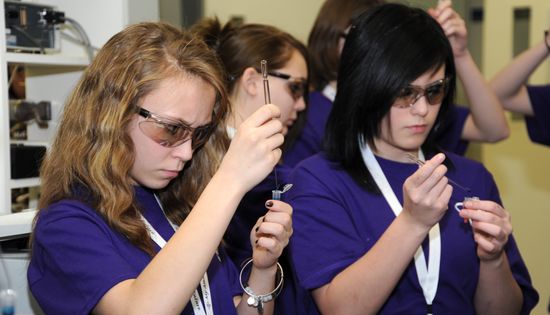Get to Them Early: A Nice Pot of Grants for Teaching STEM in Elementary Schools
/
When President Obama leaves office next year, one aspect of his legacy will be his focus on improving STEM education in the U.S. Since the beginning of his first term in office, Obama has been beating the drum about the importance of qualified teachers to develop a generation of students who are prepared to meet the needs of a changing workplace.
In his 2011 State of the Union speech, the President said, “Over the next 10 years, with so many baby boomers retiring from our classrooms, we want to prepare 100,000 new teachers in the fields of science and technology and engineering and math.” A coalition of diverse organizations met the very next day to form 100Kin10, an organization whose goal is to get 100,000 excellent STEM teachers into America’s classrooms by 2021.
Since 2011, 100Kin10 has grown to include more than 200 partners spanning nonprofits, foundations, government entities, academic institutions, and the private sector. We’ve written about Carnegie Corporation’s role in leading the 100Kin10 initiative with some impressive funding efforts and a strong commitment to collaboration as they tackle the shortage of STEM teachers in the United States. Over the course of its existence, 100Kin10 has trained 28,000 STEM educators. But this organization wants to do more than just recruit qualified teachers—it also aims to promote retention and facilitate innovative solutions to major challenges in STEM education.
Along the lines of that third mission, 100Kin10 recently announced an Early Childhood STEM Learning Challenge grant that will funnel $2 million into creating active STEM learning environments for pre-K through third grade students. The organization is looking for what it calls “moonshot” ideas from its existing partners to address root causes of challenges in early STEM development: a lack of STEM focus in elementary school teacher training, limited support for elementary teachers, and a misunderstanding of STEM teaching needs at that grade level.
Related:
- If the STEM Funding Push Has a Headquarters, It's This Organization
- Carnegie's 100Kin10 is the Superfriends of Science Education (Sort of)
- How Carnegie Supports Science Teacher Training
- Funders Join Forces to Expand STEM Teacher Preparation Program
This funding competition was designed with the goal of supporting four principal areas: collaboration (with a focus on cross-organizational partnerships in New York), big ideas, experimentation, and responsive solutions. Grant amounts vary, but 100Kin10 expects to bankroll 10 teams or individual organizations, depending on the solutions proposed by applicants. Last year’s biggest challenge grant winner was Sausalito’s Bay Area Discovery Museum, which received $380,000 to build a mobile lab to visit local schools and teach young kids about engineering.
The application launches in September with an October 26, 2016 deadline, and prospective applicants should be ready to explain the problem they want to address and provide a prototype for their solution that has been tested and revised based on user feedback. Successful projects will clearly identify the problem they’re tackling and offer solutions that are desirable and feasible, and that have the potential for scalability.
We’ve called 100Kin10 an ideas broker that connects the doers with the funders. A 2013 New York Times editorial called the group “the most important effort” to get qualified STEM teachers into the nation’s classrooms, and support for this network of partnerships continues to grow. The question now is whether this movement can gain enough steam to increase the pace of teacher recruitment over the rest of the decade to meet the ambitious goal set by President Obama. In the long run, the attention being paid to STEM education will be critical in helping America stay competitive in the global economy.








